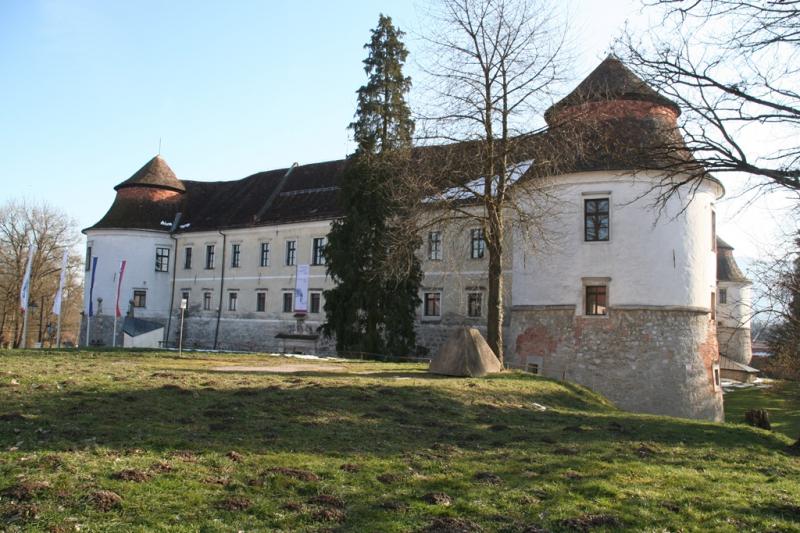
The first castle to stand on the spot was probably built by the Bishops of Salzburg in the 12th century, before the town itself even existed. The castle, initially a wooden structure, became an increasingly significant strategic site. It soon became the seat of the local military and the home of a coin mint. A new town, known as Brežice, slowly emerged around it.
In the 15th century, the castle was increasingly affected by the turmoil sweeping across Central Europe. Attacks by the Ottoman Turks were common, while tensions between Europe’s noble families were increasing. For a time, the castle was controlled by Mathias Corvinus, a Hungarian king beloved by the ordinary people and a rival to the mighty Hapsburgs. But Corvinus was defeated, and the castle was eventually ransacked by the peasants, whose demands for better living conditions caused them to rise up against their overlords. In the various conflicts of the time, Brežice Castle was burned down several times. In the 1520s, German Emperor Ferdinand ordered the construction of a brand-new Renaissance castle on the spot of the original structure.
Several generations later, the castle passed into the hands of the Attems family. The political situation had become calmer, and the family transformed the building from a military fort into a stately residence. The Knights’ Room was decorated with some of the most impressive Baroque frescoes in Slovenia. Presumably the work of a painter named Franc Karl Remb from the town of Radovljica, the trompe l'oeil frescoes were inspired by the art in Rome’s Barberini Palace and portray the development of architecture since the classical era, allegorical images celebrating science, and scenes from Greek mythology.
A long period of relative peace came to an end in the 20th century. First, an earthquake damaged the castle. During World War I, the Knights’ room housed a field hospital. The entire castle was nationalized after World War II, and it initially served as a residence for the poor.
Today, it houses a museum, which among its many treasures includes a large archeological collection and one of the oldest printed Bibles in the Slovenian language, while another exhibit shows how a typical family once lived in the town overlooked by the storied Brežice Castle.

































































